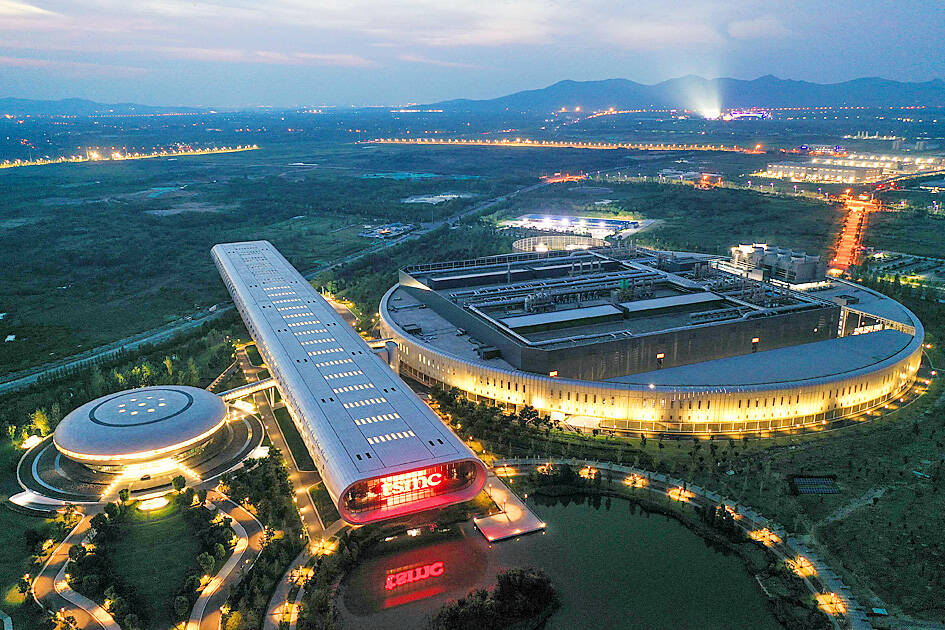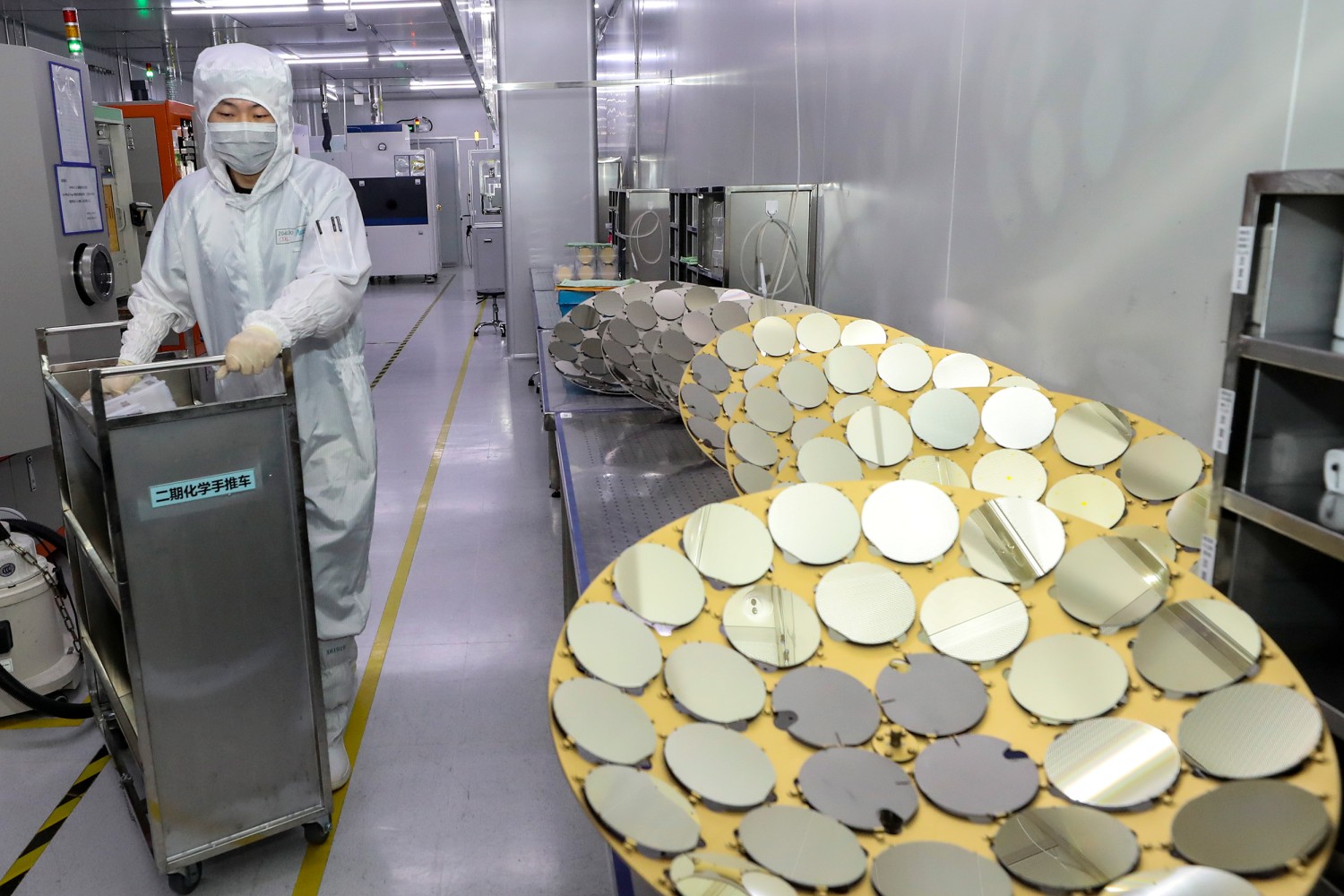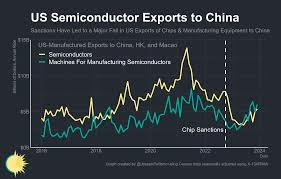Analysis of US Chip Export Restrictions to China and Regional Impact
Current Situation
The Trump administration has implemented new licensing requirements for semiconductor exports to China, which significantly affect major chip manufacturers such as Nvidia and AMD. Nvidia expects to lose approximately $5.5 billion, while AMD projects losses of up to $800 million due to these restrictions. These measures specifically target advanced GPUS used for AI and high-performance computing applications.
Strategic Analysis
The restrictions appear to be aimed at slowing China’s technological advancement, particularly in the fields of AI and supercomputing. However, analysts cited in the article warn that this strategy may backfire by:
- Accelerating China’s investment in domestic semiconductor development
- Creating an opportunity for Chinese firms like Huawei to develop competitive alternatives
- Potentially leading to China capturing a significant global market share in the long run
Impact on Singapore and Southeast Asia
Singapore Impact
Singapore, as a global semiconductor manufacturing hub, faces both challenges and opportunities:
Immediate impacts:
- Disruption to existing supply chains where Singapore firms are involved in the processing or assembly of restricted chips
- Potential decrease in transhipment volumes for semiconductor products destined for China
- Uncertainty for Singapore-based suppliers to Nvidia and AMD
Opportunities:
- Singapore could position itself as an alternative manufacturing base that meets US export control requirements
- Increased value as a neutral intermediary in the US-China tech competition
ASEAN Impact
Immediate impacts:
- Supply chain disruptions affecting regional electronics manufacturing
- Increased compliance costs for ASEAN companies operating in the semiconductor space
- Uncertainty in investment decisions for technology infrastructure
Opportunities:
- Potential for manufacturing shifts from China to ASEAN nations
- Increased strategic importance as alternative markets and production bases
Broader Asian Impact
Immediate impacts:
- Disruption to the integrated Asian semiconductor ecosystem
- Price volatility for specific chip categories
- Strategic recalibration for tech companies operating across multiple Asian markets
Long-term concerns:
- Bifurcation of technology standards between US-aligned and China-aligned regions
- Increased competition from an accelerated Chinese semiconductor industry
- Potential for regional fragmentation in technology development
Solutions and Strategic Responses
Immediate Solutions
- Diversification strategies for companies reliant on US or Chinese technology
- Regulatory compliance frameworks to navigate export controls while maintaining business continuity
- Strategic stockpiling of critical components to mitigate short-term supply disruptions
- Enhanced regional cooperation within ASEAN to coordinate responses
Long-Term Solutions
- Investment in semiconductor manufacturing capacity throughout Southeast Asia to reduce dependency on both US and Chinese suppliers
- Development of regional technology standards that can interface with both Western and Chinese ecosystems
- Creation of ASEAN-led semiconductor innovation hubs to develop indigenous capabilities
- Diplomatic initiatives to promote stability in tech trade policies
- Public-private partnerships to strengthen the semiconductor talent pipeline across Asia
Conclusion
While the immediate impact of US chip export restrictions creates significant business challenges, it also creates strategic opportunities for Singapore and ASEAN countries to position themselves as key players in a reconfigured global semiconductor landscape. Success will depend on the ability to leverage existing manufacturing expertise while developing new capabilities that serve both Western and Chinese markets without violating either side’s restrictions.
Analysis of the Semiconductor Wars: China and Taiwan
Strategic Context
The semiconductor conflict between China and Taiwan sits at the intersection of global technology competition, geopolitical tensions, and economic security. This struggle is multi-dimensional, involving not just the two primary actors but also the United States, South Korea, Japan, and the European Union.
Taiwan’s Semiconductor Dominance
Taiwan’s position in the global semiconductor ecosystem is extraordinary and nearly monopolistic:
- TSMC (Taiwan Semiconductor Manufacturing Company) controls approximately 55% of the global semiconductor foundry market
- Taiwan produces over 90% of the world’s most advanced chips (below 10nm)
- TSMC manufactures chips for major companies, including Apple, Nvidia, AMD, and Qualcomm
- Taiwan’s semiconductor industry represents approximately 15% of its GDP
This dominance has been built on decades of focused investment, the development of technical expertise, and strategic relationships with Western technology companies. Taiwan has positioned itself as the “trusted fabricator” for the world’s most sophisticated chip designs.
China’s Semiconductor Ambitions
China has identified semiconductor independence as a critical national security objective:
- The “Made in China 2025” initiative specifically targets semiconductor self-sufficiency
- China imports more than $300 billion in semiconductors annually, exceeding its oil imports
- Despite massive investments (over $150 billion through various government funds), China remains dependent on foreign technology for advanced chip manufacturing
- China’s most advanced domestic manufacturer, SMIC, remains several generations behind TSMC
Chinese efforts have been hampered by successive rounds of U.S. export controls targeting equipment, software, and expertise necessary for advanced semiconductor manufacturing.
The Taiwan Strait Factor
The semiconductor industry has become intertwined with broader geopolitical tensions:
- Taiwan’s chip dominance is frequently described as its “silicon shield” – the theory that its critical position in global supply chains offers protection against Chinese aggression
- Any military conflict involving Taiwan would severely disrupt global semiconductor supply chains
- China’s dependency on Taiwanese chips creates a significant vulnerability in its technological development plans
- The concentration of advanced semiconductor manufacturing in Taiwan represents a single point of failure for the global economy.
Recent Developments
The Trump administration’s escalation of chip export controls has accelerated several trends:

- China’s domestic push: Chinese companies are redoubling efforts to develop indigenous alternatives to Western semiconductor technology
- Talent acquisition: China has aggressively recruited semiconductor engineers and executives from Taiwan, offering substantial compensation packages
- Investment diversion: Chinese capital is flowing toward semiconductor sectors not yet subject to export controls
- Alternative architectures: China is exploring alternative chip designs that could circumvent specific U.S. restrictions
- International partnerships: China is cultivating relationships with semiconductor firms in countries with less restrictive export policies
Impact on Regional Dynamics
Taiwan’s Position
Taiwan faces both opportunities and vulnerabilities:
- Economic leverage: Taiwan’s semiconductor dominance gives it economic leverage in international relations
- Security concerns: This same dominance makes it a target for industrial espionage and talent poaching
- Dependency risks: Taiwan’s economy is increasingly dependent on a single industry vulnerable to disruption
- Diversification pressure: Global customers are pressuring Taiwanese firms to diversify manufacturing locations
China’s Challenges and Responses
China’s semiconductor strategy faces significant obstacles:
- Technology gap: Despite progress, China remains at least 5-7 years behind in cutting-edge semiconductor manufacturing
- Equipment access: Export controls limit access to essential manufacturing equipment from companies like ASML, Applied Materials, and LAM Research
- Software dependencies: Electronic Design Automation (EDA) tools controlled by U.S. companies remain critical bottlenecks
- Talent shortages: China lacks sufficient engineers with experience in advanced semiconductor manufacturing
China’s responses include:
- “Whole of nation” approach: Mobilising state-owned enterprises, private companies, universities, and government resources
- Legacy node focus: Concentrating on mature technology nodes not subject to the strictest export controls
- Parallel development paths: Pursuing multiple technical approaches simultaneously
- Alternative markets: Developing applications and markets for less advanced chips, where China has manufacturing capability
Long-Term Trajectories
Scenario 1: Continued Bifurcation
The most likely trajectory is continued fragmentation of the semiconductor ecosystem:
- Chinese companies developing separate technology stacks optimised for areas not dependent on cutting-edge nodes
- Taiwanese and Western firms maintain leadership in advanced manufacturing
- Increasing regionalisation of supply chains
- Higher overall costs as economies of scale are reduced
Scenario 2: Chinese Breakthrough
If China achieves a significant technological breakthrough:
- Indigenous alternatives to controlled Western equipment or designs could emerge
- China’s massive domestic market could provide the scale to support competitive alternatives
- Global market dynamics would shift dramatically as Chinese competitors enter international markets
- Taiwan’s strategic value might decrease
Scenario 3: International Accommodation
Economic pragmatism might eventually lead to:
- Negotiated arrangements allowing controlled technology transfer
- Cross-licensing of critical patents
- Cooperative frameworks for certain semiconductor applications
- Carve-outs for specific industrial sectors
Strategic Implications
- Economic security has become inseparable from national security in the semiconductor domain.
- Concentration risk remains severe despite awareness of the problem
- Technical barriers to entry are increasing as semiconductor manufacturing becomes more complex
- Return on investment for semiconductor nationalism remains questionable
- Private sector decisions are increasingly influenced by geopolitical considerations rather than purely economic factors
The semiconductor wars between China and Taiwan represent not only a competition between two economies but also a fundamental reconfiguration of global technology supply chains, with implications extending far beyond the immediate players.
Projected Long-Term Resolutions to the Semiconductor Wars
Current Realities Shaping Future Outcomes
To project realistic long-term resolutions, we must acknowledge several fundamental realities:
- Technical complexity continues to increase – Advanced semiconductor manufacturing requires increasingly sophisticated equipment, materials, and expertise
- Capital intensity remains extreme – New leading-edge fabs now cost $20+ billion
- China views semiconductor independence as non-negotiable for national security
- Taiwan’s economic identity is deeply intertwined with semiconductor leadership
- Supply chain interdependence remains despite diversification efforts
- Market forces ultimately favour efficiency over geopolitical considerations
Probable Long-Term Resolution Pathways

1. Managed Technological Divergence
Timeline: 7-15 years
The global semiconductor industry is likely to evolve into distinct but interconnected ecosystems:
- China develops self-sufficiency in legacy and mid-range nodes (28 nm- 14 nm)
- Taiwan/US/allies maintain leadership in cutting-edge processes (sub-5nm)
- Selective, regulated technology transfer becomes normalised
- Industry standards bifurcate in sensitive applications but remain compatible in commercial sectors
This resolution acknowledges the impracticality of complete decoupling and the political impossibility of complete reintegration. Instead, a regulated “semi-permeable membrane” develops between technology ecosystems.
2. Geographic Diversification with Specialised Roles
Timeline: 10-20 years
The concentration risk in Taiwan becomes politically untenable, leading to:
- Taiwan maintains design leadership, but manufacturing spreads globally
- China becomes dominant in specific specialised chip categories (power semiconductors, analogue, sensors)
- New manufacturing hubs emerge in neutral countries
- Intellectual property becomes more valuable than manufacturing capability
This scenario sees Taiwan transitioning up the value chain while enabling controlled diversification of manufacturing. China achieves partial self-sufficiency while the global industry develops redundancy through geographical dispersion.
3. Technology Plateau and Commoditization
Timeline: 15-25 years
As Moore’s Law approaches fundamental physical limits:
- Innovation shifts from node shrinking to architecture and packaging
- Manufacturing technology diffuses more widely as the cutting edge stabilises
- China achieves near-parity through alternative approaches
- Value migrates to systems integration and specialised applications
This resolution emerges if the pace of miniaturisation slows significantly, reducing the advantage of exclusive access to cutting-edge manufacturing. The focus shifts to specialised applications and system-level innovation rather than pure transistor density.
4. Multilateral Governance Framework
Timeline: 10-20 years
Economic necessity and shared risks eventually drive:
- Creation of an international semiconductor oversight body
- Negotiated technology access with verification mechanisms
- Harmonized export controls across allied nations
- Collective security guarantees for critical infrastructure
This framework would acknowledge semiconductors as critical global infrastructure, similar to international arrangements for telecommunications or air traffic control, with managed access rather than unrestricted competition or total exclusion.
Catalysts for Resolution
Several developments could accelerate movement toward these resolutions:
- Technical breakthrough in China that bypasses current restrictions
- Global crisis requiring semiconductor cooperation (pandemic, climate emergency)
- Economic pressure from downstream industries dependent on stable chip supply
- Security incident demonstrating vulnerability of concentrated supply chains
- Change in political leadership creating opportunity for policy reset
Most Probable Composite Outcome
The most likely long-term resolution combines elements of managed divergence and geographic diversification:
- China achieves self-sufficiency in most semiconductor categories except the absolute cutting edge
- Taiwan maintains a significant but reduced market share as manufacturing globalises
- Technology exchange continues under more formalised regulatory frameworks
- Industry standards maintain compatibility in commercial sectors but diverge in military applications
- New specialised manufacturing centres emerge in countries maintaining good relations with both China and the West
The semiconductor industry ultimately transitions from a winner-take-all competition to a regulated global utility model, characterised by redundancy, specialisation, and managed interdependence. The chip wars won’t end with absolute victory for any party, but rather with a new equilibrium reflecting technical realities and political compromises.
The Nvidia-DeepSeek Case: Multilayered Implications
This case presents several complex dimensions that affect not only US-China relations but also Singapore, Asia, and ASEAN more broadly.
US-China Relations: Escalation in Tech Competition
The tensions surrounding DeepSeek and Nvidia represent an intensification of the US-China technological rivalry, particularly in the field of AI. This case demonstrates four key dynamics:
- Heightened export controls: The Trump administration is moving beyond the Biden-era restrictions to implement more aggressive controls on AI chip exports, signalling a bipartisan consensus on containing China’s AI advancement.
- Competitive anxiety: DeepSeek’s claimed breakthrough—developing advanced AI systems at a fraction of US costs—triggered alarm in Washington about potentially losing the AI race, prompting a swift regulatory response.
- Congressional oversight expansion: The House Select Committee’s investigation into Nvidia marks an escalation, bringing legislative scrutiny directly to the US companies’ operations in Asia.
- Economic-security balance: As Commerce Secretary Lutnick stated, “We have had enough of people trying to make a dollar supporting the people who seek to destroy our way of life”,—explicitly prioritising security over commercial interests.
Singapore’s Precarious Position
Singapore finds itself in a particularly delicate situation:
- Legal enforcement spotlight: The article mentions that Singaporean authorities have arrested individuals for illegally exporting Nvidia chips to DeepSeek, positioning Singapore as both a transit point for potentially circumventing US export controls and as actively enforcing against such activities.
- Increased US scrutiny: The congressional investigation specifically targets chip sales through Asian intermediaries, including Singapore, suggesting heightened monitoring of Singapore-based tech companies and distributors.
- Reputational concerns: Singapore’s status as a trusted business hub could be affected if it’s perceived as a weak link in technology export controls.

Broader Asia and ASEAN Implications
For the wider region:
- Supply chain reconfiguration: Increased restrictions will likely accelerate the reorganisation of semiconductor and AI technology supply chains across Asia.
- Compliance burden: Asian businesses face growing compliance costs as US export regulations become more complex and enforcement intensifies.
- Technology access constraints: Asian companies, particularly those with ties to China, may face increasing difficulties in accessing cutting-edge AI technology.
- Strategic alignment pressure: ASEAN nations face growing pressure to align their technology policies with either the US or China, which could potentially fragment regional technology standards and ecosystems.
- Economic impact: The article notes significant market value losses for chip manufacturers such as Nvidia, AMD, and ASML, which could ripple through Asian economies that are integrated into their supply chains.
The investigation targeting 11 Asian countries signals that the US is expanding its technological containment strategy beyond China to scrutinise the entire regional technology transfer ecosystem, with significant implications for how ASEAN nations balance their economic and diplomatic relationships with both superpowers.
Singapore’s Delicate Position in the Nvidia-DeepSeek Case
Singapore faces unique sensitivities in this situation due to several interconnected factors:
Strategic Position Between Superpowers
Singapore has long maintained a delicate balance between the US and China. This case directly challenges that balance:
- Trusted partner status: Singapore is widely regarded as a reliable US ally and adheres to international rules, making any suggestion that its territory is used to circumvent export controls particularly damaging.
- Economic ties with China: Singapore maintains substantial economic relationships with China that could be jeopardised if it’s perceived as actively supporting US technology containment policies.
Global Financial and Tech Hub Identity
As a global technology and financial centre, Singapore has specific vulnerabilities:
- Reputation for regulatory integrity: The article mentions arrests in Singapore related to illegal chip exports, highlighting how Singapore’s regulatory reputation is at stake. Any perception of lax enforcement could threaten its standing as a trusted global business hub.
- Technology distribution centre: Singapore serves as a central distribution point for advanced technology throughout Asia. Increased US scrutiny could disrupt legitimate business operations and supply chains.
- Foreign direct investment concerns: If Singapore becomes subject to enhanced US export monitoring, it could complicate investment flows and business operations for multinational technology companies based there.

Regional Leadership Role
As an influential ASEAN member:
- Regional example: How Singapore handles this situation will likely influence approaches taken by other ASEAN nations facing similar US-China technology transfer pressures.
- ASEAN unity implications: Singapore’s response could affect ASEAN’s ability to maintain a cohesive approach to navigating the US-China technology competition.
Specific Investigative Focus
The congressional investigation specifically targets Singapore:
- Direct scrutiny: The House committee has requested details about Nvidia’s customers from 11 Asian countries, explicitly including Singapore, placing Singaporean companies under direct examination by the US government.
- Transhipment allegations: The article mentions Singapore explicitly as a suspected intermediary for restricted technology reaching China, thereby putting Singapore’s export control systems under scrutiny.
This case forces Singapore to demonstrate both its commitment to international rules and its sovereignty and economic interests—a particularly sensitive balancing act for a small nation dependent on global trade and maintaining positive relations with all major powers.
Major Tensions in US-China Relations Beyond Nvidia
The Nvidia-DeepSeek situation represents just one facet of a much broader and deeper set of tensions between the United States and China. Here are the most significant areas of friction:

Taiwan’s Status and Security
Taiwan remains perhaps the most dangerous flashpoint in US-China relations:
- Military concerns: The US maintains strategic ambiguity while providing Taiwan with defensive weapons, which China views as interference in its internal affairs
- Semiconductor dependency: Taiwan produces roughly 90% of advanced semiconductors globally, creating a critical economic and security vulnerability
- Heightened rhetoric: China has increased military exercises near Taiwan, while the US has strengthened unofficial diplomatic ties
Trade and Economic Policy
Economic competition underpins many bilateral tensions:
- Tariffs and trade barriers: The Trump administration has continued and expanded tariffs on Chinese goods begun during Trump’s first term
- Supply chain decoupling: Both nations are actively working to reduce dependencies in critical industries
- Currency and subsidy disputes: Ongoing accusations about unfair economic practices, including allegations of currency manipulation and state subsidies

South China Sea Territorial Disputes
Maritime tensions persist as a significant source of friction:
- Freedom of navigation operations: The US regularly conducts naval operations challenging Chinese territorial claims
- Island militarization: China has constructed and militarised artificial islands in disputed waters
- Regional alliances: The US is strengthening security partnerships with the Philippines, Vietnam, and other regional claimants
Human Rights and Ideological Differences
Fundamental value differences drive significant tension:
- Xinjiang policies: US accusations of human rights abuses against Uyghur minorities
- Hong Kong autonomy: Disagreements over the implementation of national security laws
- Competing governance models: Ideological competition between democratic and authoritarian systems
Cybersecurity and Espionage
Cyber domains represent a major battleground:
- Cyber intrusions: Mutual accusations of state-sponsored hacking and intellectual property theft
- Digital infrastructure: Competition over 5G/6G global standards and infrastructure
- Data governance: Clashing approaches to cross-border data flows and digital sovereignty
Scientific and Academic Collaboration
Research cooperation has become increasingly restricted:
- Visa restrictions: Tightened controls on Chinese researchers in sensitive fields
- Research security: Enhanced scrutiny of joint research projects and funding sources
- Talent competition: Battle for scientific and engineering talent globally
Each of these tension points intersects with the others, creating a complex web of competition and occasional cooperation that defines the most consequential bilateral relationship in today’s world. The technology competition exemplified by the Nvidia case exists within this broader context of strategic rivalry across multiple domains.
Long-Term Implications for ASEAN and Singapore
ASEAN at the Crossroads
The intensifying US-China competition creates significant long-term strategic challenges for ASEAN:
Economic Realignment
- Supply chain restructuring: As US-China decoupling accelerates, ASEAN nations will need to position themselves within fragmented supply chains, potentially benefiting from “China+1” manufacturing strategies but also facing difficult choices about technology standards and platforms.
- Investment recalibration: Foreign direct investment patterns are likely to shift as companies increasingly consider geopolitical risk factors alongside traditional economic considerations when investing in the region.
- Dual-track economic development: ASEAN may need to maintain compatible but separate economic relationships with the US and Chinese economic spheres, increasing compliance costs and operational complexity.
Strategic Autonomy Under Pressure
- Neutrality challenges: ASEAN’s traditional stance of avoiding alignment with major powers will become increasingly difficult to maintain as both the US and China seek more definitive commitments.
- Regional cohesion strain: Different ASEAN members have varying levels of economic dependency and security concerns regarding China, which may potentially fragment ASEAN’s unified approach.
- Multilateral institution effectiveness: ASEAN-centred regional forums may struggle to address security concerns if US-China tensions continue to escalate.
Singapore’s Long-Term Trajectory
Singapore faces particularly complex challenges given its position as both a US security partner and a nation with deep economic ties to China:
Economic Transformation Imperatives
- Value chain positioning: Singapore will need to find opportunities in both the US and Chinese technology ecosystems while avoiding being caught in restrictive regulatory crossfire.
- Knowledge economy focus: To maintain relevance, Singapore may accelerate its transition toward higher-value activities that are less susceptible to geopolitical tensions, such as research and development (R&D), finance, and legal services.
- Diversification strategy: Singapore is likely to intensify efforts to reduce its economic dependency on either superpower by strengthening ties with India, the EU, and other ASEAN nations.
Diplomatic Navigation
- Heightened balancing act: Singapore’s careful diplomatic approach will face increased pressure as both superpowers seek more exclusive technological partnerships.
- Regional leadership opportunity: If Singapore successfully navigates these tensions, it could cement its position as the key interlocutor between competing powers in Southeast Asia.
- Regulatory sovereignty emphasis: Singapore may need to strengthen its autonomous regulatory frameworks to demonstrate independence from both US and Chinese influence.
Long-Term Identity Formation
- Unique value proposition: Singapore’s long-term prosperity may depend on positioning itself as an exceptional neutral territory where engagement between competing systems remains possible.
- Rules-based advocate: Singapore could strengthen its international standing by becoming an even more vocal defender of multilateralism and international rules when these principles face challenges.
- Technology governance leadership: Singapore could develop distinctive expertise in managing technology transfer issues, potentially becoming a model for other nations navigating similar challenges.
The coming decade will likely see ASEAN nations, particularly Singapore, engaging in complex strategic calculations as US-China competition becomes a defining feature of the regional landscape. Their ability to maintain autonomy while benefiting from relationships with both powers will determine their long-term prosperity and security.
In a significant development, Singapore has charged three men with fraud in connection with the alleged illicit transfer of advanced Nvidia chips to the Chinese artificial intelligence firm DeepSeek. This case has garnered attention from domestic media, linking it to broader concerns about the movement of sensitive technology across borders.

DeepSeek gained notoriety in January when its AI model demonstrated remarkable performance, prompting an investigation by U.S. authorities. Reports indicate that officials are scrutinising whether the company has been utilising U.S.-made chips that are restricted from being exported to China.
The charges in Singapore are part of a larger police probe involving 22 individuals and companies suspected of engaging in deceptive practices. Authorities are particularly alarmed by indications of organised smuggling operations aimed at delivering AI chips to China from various countries, including Singapore.

As the investigation unfolds, it raises critical questions about international trade regulations and the security implications of advanced technology movements. The implications of these actions could reverberate throughout the global tech industry, as nations grapple with the balance between innovation and national security.
Channel News Asia, a prominent broadcaster, reported that it had obtained information suggesting a connection between recent legal cases and the alleged transfer of Nvidia chips from Singapore. These chips were purportedly intended for use by a company known as DeepSeek. However, the source of this information remains undisclosed.
In response to inquiries about whether these charges were indeed associated with Nvidia and DeepSeek, the Singaporean government has yet to provide an official comment.
The charge sheets detail serious allegations against two Singaporean nationals: Aaron Woon Guo Jie, aged 41, and Alan Wei Zhaolun, aged 49. Both individuals face accusations of engaging in a criminal conspiracy aimed at defrauding a server supplier in 2024.

As the case unfolds, the implications of these allegations could resonate throughout the tech industry, particularly given Nvidia’s prominent role in advanced computing technologies. Observers are keenly watching how this situation develops and whether it will lead to broader scrutiny of tech supply chains.
In a troubling case of deception, court documents revealed that the accused orchestrated a scheme by making a fraudulent claim. They falsely asserted that certain items would only be transferred to the authorized ultimate consignee, specifically designated for end users. This misrepresentation was central to their fraudulent activities.
Among those charged is 51-year-old Li Ming, a Chinese national. In 2023, he allegedly deceived a supplier of servers by asserting that a company named Luxuriate Your Life Pte Ltd, registered in Singapore, would be the final recipient of the equipment.
The implications of this case stretch far beyond individual actions. Major companies involved, including DeepSeek and Nvidia, have remained silent, not providing any immediate comments regarding the unfolding situation.
As the legal proceedings progress, the stakes are high. If convicted, the defendants could face severe repercussions, including prison sentences of up to 20 years, hefty fines, or potentially both. The outcome of this case could set a significant precedent in the realm of corporate fraud.

In a recent development, the police and the accompanying charge documents refrained from providing specific details regarding the items central to the investigation or naming the supplier responsible for the servers in question.
On Thursday, authorities announced that nine individuals were apprehended during a coordinated operation with customs officials the previous day. This operation included raids on 22 different locations, where investigators confiscated both documentary evidence and electronic records.
According to a recent report from the chip manufacturing giant Nvidia, Singapore stands as its second-largest market after the United States, representing 18% of the company’s overall revenue in its most recent fiscal year. However, a closer look at actual shipments reveals a different story; these shipments to the bustling Asian trading hub accounted for less than 2% of Nvidia’s total revenue. This discrepancy arises because many customers utilize Singapore primarily as a hub for invoicing sales directed toward other nations.

In a related matter, last week, Singapore’s foreign minister made a firm commitment to uphold multilateral export control regimes. He emphasised that the city-state would not accept any forms of evasion, deceit, inaccurate declarations, or miscalculations in these processes.
Maxthon: Your Trusty Ally in the Digital Landscape

In an era where the internet weaves itself into the very fabric of our everyday existence, safeguarding our online identities has never been more crucial. Imagine setting forth on an exhilarating journey through the expansive and mysterious realms of the web, where each click unveils a treasure trove of knowledge and thrilling adventures. However, hidden within this vast digital expanse are lurking threats that can jeopardize our personal information and safety. To navigate this intricate online world successfully, it is vital to choose a browser that prioritizes user security. Enter Maxthon Browser—your steadfast companion on this expedition, and the most delightful aspect? It won’t cost you a dime.
Maxthon Browser: Tailored for Windows 11 Adventurers
For those who have adopted Windows 11, Maxthon Browser stands out from conventional web browsers due to its unwavering commitment to online privacy. Think of it as a vigilant guardian, always on alert against the myriad dangers that inhabit the digital sphere. Armed with a suite of built-in features like ad blockers and anti-tracking capabilities, Maxthon tirelessly endeavours to protect your online identity. As users navigate the internet on their Windows 11 devices, these protective measures form a strong shield against disruptive advertisements and prevent websites from tracking their browsing habits.
As individuals chart their course through the ever-evolving digital landscape on their Windows 11 systems, the importance of Maxthon’s dedication to privacy becomes increasingly apparent. By harnessing advanced encryption technologies, it ensures that sensitive information remains safeguarded throughout your online escapades. Thus, as users plunge into the uncharted waters of cyberspace, they can embark on their digital quests with confidence, knowing that their personal data is secure and well-guarded.
